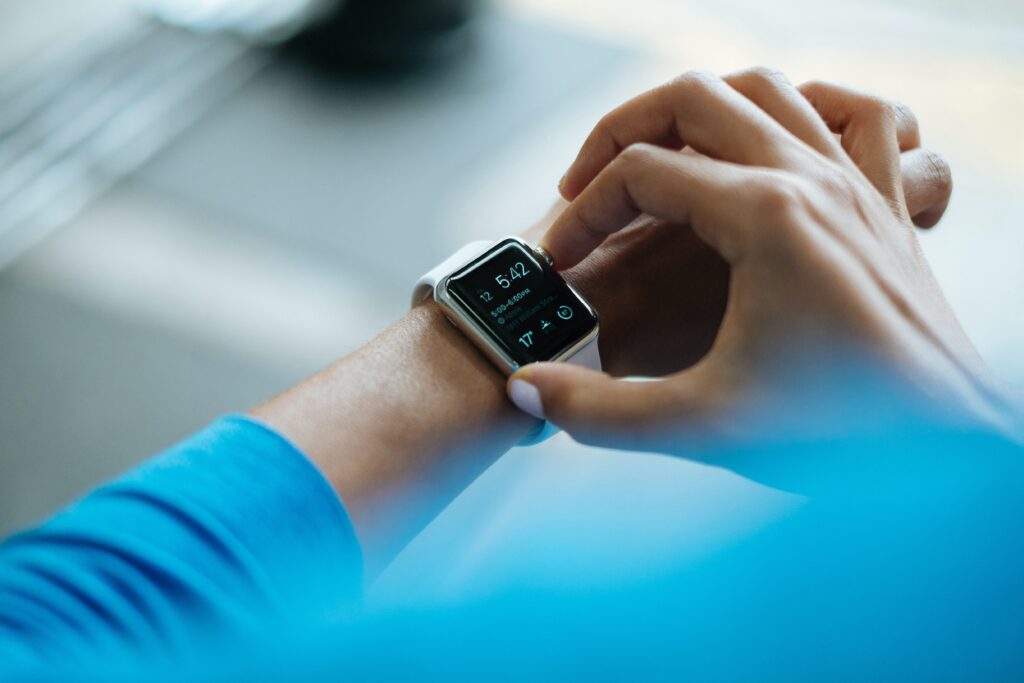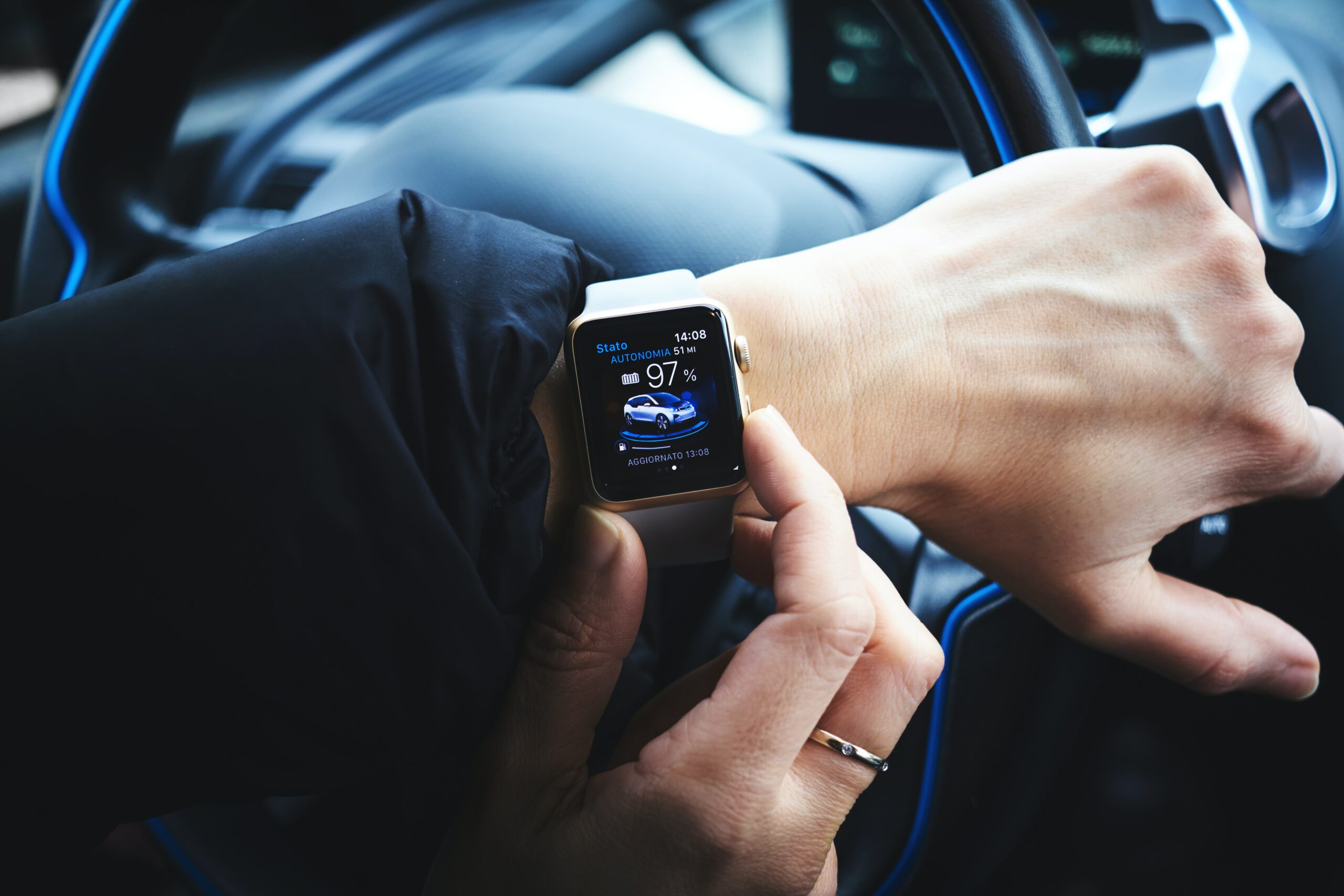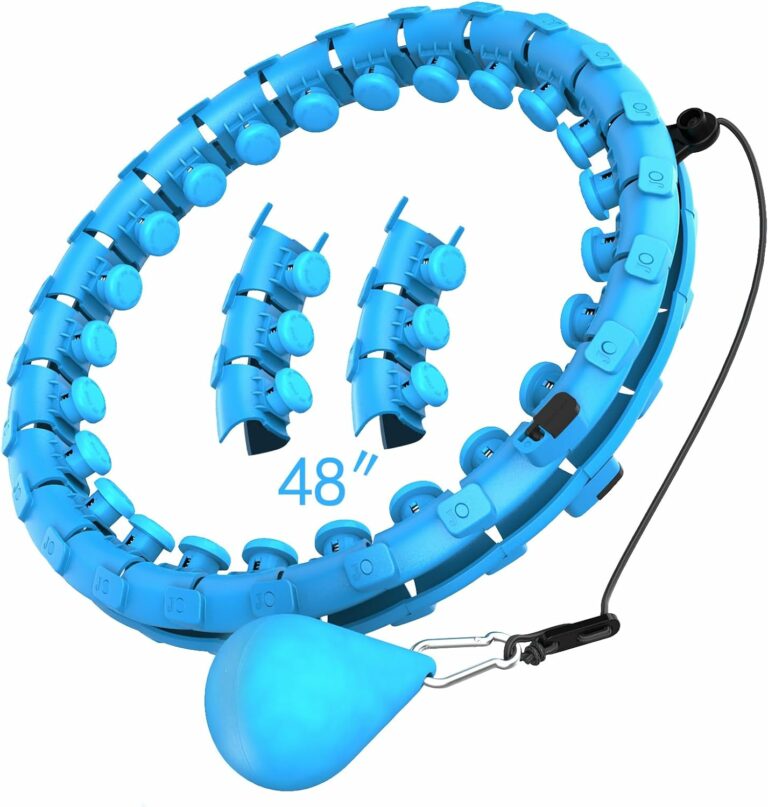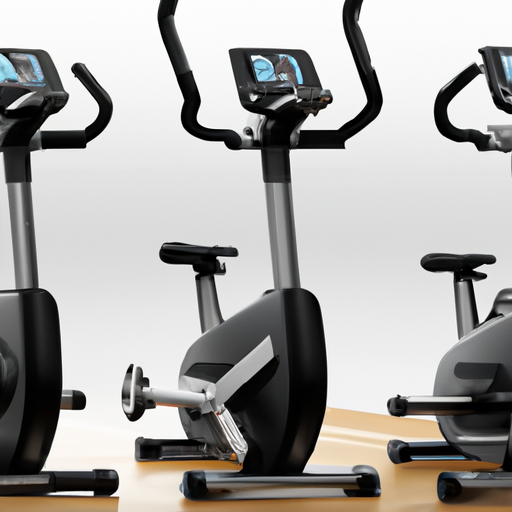Imagine a world where your health is constantly monitored, allowing you to take proactive steps towards improving your well-being. Thanks to the technological advancements of wearable devices, this is now a reality. From smartwatches to fitness trackers, these devices have revolutionized the way we approach our health. In this article, we will explore the impact of wearable tech on monitoring and improving health, shedding light on how these devices are transforming the way we care for ourselves. So, get ready to embrace the future of healthcare as we delve into the incredible world of wearable tech.
Introduction
Wearable technology has revolutionized the way we monitor and improve our health. With advancements in technology, wearables have become an essential tool for tracking vital signs, sleep patterns, and physical activity. They empower individuals to take control of their health by providing real-time feedback and motivation. Furthermore, wearables have not only transformed personal health management but also have a significant impact on the healthcare industry by enabling remote patient monitoring, improved communication and collaboration, and data collection and analysis. Despite the numerous benefits, there are challenges involving privacy and data security, accuracy and reliability, user adherence, and legal and ethical implications. Looking forward, the integration of wearable tech with artificial intelligence, its role in preventive healthcare, potential applications in chronic disease management, and its impact on mental health represent exciting future prospects for this rapidly evolving field.
1. Advancements in Wearable Technology
1.1 Introduction to Wearable Technology
Wearable technology refers to electronic devices that can be worn on the body, typically as accessories or clothing, with built-in sensors and connectivity. These devices collect and transmit data, providing users with valuable insights into their health and wellness. From smartwatches and fitness trackers to smart clothing and even implantable devices, wearable tech has come a long way since its inception, transforming the healthcare landscape.
1.2 Types of Wearable Devices
Wearable devices encompass a wide range of offerings, each tailored to specific health monitoring needs. Smartwatches, for instance, offer a comprehensive suite of features, including heart rate monitoring, sleep tracking, and GPS capabilities. Fitness trackers, on the other hand, are specifically designed to monitor physical activity, count steps, and estimate calorie burn. Other wearable devices like smart clothing can track body temperature, respiratory rate, and even detect falls. Moreover, implantable devices such as insulin pumps and cardiac monitors provide continuous monitoring and treatment for specific medical conditions.
1.3 Evolution of Wearable Tech
The evolution of wearable technology has been remarkable. Initially, wearable devices were primarily focused on basic functionalities such as step counting and heart rate monitoring. However, with technological advancements, wearables now offer a multitude of features, including blood pressure monitoring, ECG recording, and even blood glucose level tracking. Moreover, wearables have become more compact, stylish, and comfortable, making them more accessible and appealing to a wider audience. The integration of advanced sensors, wireless connectivity, and long battery life has further enhanced the capabilities and user experience of these devices.

2. Monitoring Health with Wearable Tech
2.1 Importance of Health Monitoring
Monitoring our health is crucial for early detection of potential health issues and for maintaining overall well-being. Wearable tech provides continuous and real-time monitoring of vital signs, sleep patterns, and physical activity, enabling individuals to gain valuable insights into their health status. By tracking these metrics on a regular basis, wearables can help identify patterns and trends that may indicate potential health problems or areas for improvement.
2.2 Vital Signs Tracking
One of the primary functions of wearable technology is tracking vital signs such as heart rate, blood pressure, and oxygen saturation level. By continuously monitoring these vital signs, wearables can detect anomalies and alert users to potential health risks. For individuals with conditions such as hypertension or heart disease, wearable devices can provide valuable data for managing and adjusting medication dosage or treatment plans. Moreover, continuous heart rate monitoring during physical activity can help optimize exercise intensity and improve workouts.
2.3 Sleep Tracking
Sleep plays a critical role in overall health and well-being. Wearable devices equipped with sleep tracking capabilities can monitor sleep quality, duration, and stages, providing users with insights into their sleep patterns. By analyzing this data, individuals can make adjustments to their sleep routines, such as optimizing bedroom environment, developing a consistent sleep schedule, and identifying potential sleep disorders. Improving sleep quality can have a profound impact on various aspects of health, including mental focus, immune function, and mood regulation.
2.4 Physical Activity Monitoring
Regular physical activity is essential for maintaining good health and preventing chronic conditions. Wearable devices with activity tracking features can monitor steps taken, distance traveled, calories burned, and even specific exercises performed. By setting goals and receiving real-time feedback, individuals can stay motivated and track their progress. Wearables can also provide reminders to move or stand, promoting a more active lifestyle. Physical activity monitoring through wearables has shown to improve adherence to exercise routines and overall fitness levels.
3. Impact on Personal Health Management
3.1 Empowering Individuals to Take Control
Wearable tech has empowered individuals to take control of their own health. By providing users with access to real-time data and personalized insights, wearables enable individuals to make informed decisions about their lifestyle choices. Whether it’s tracking steps, monitoring heart rate, or analyzing sleep patterns, wearables serve as constant reminders and motivators for individuals to prioritize their health. With this newfound sense of control, individuals can make positive changes and improve their overall well-being.
3.2 Real-Time Feedback and Motivation
One of the key advantages of wearable technology is its ability to provide real-time feedback and motivation. Regular feedback and reminders can significantly improve adherence to health goals, such as meeting daily step targets or maintaining a consistent exercise routine. Wearables can send notifications, track progress, and provide achievements, creating a gamified experience that encourages individuals to stay committed to their health goals. This constant feedback loop strengthens motivation and helps individuals stay on track, ultimately leading to better health outcomes.
3.3 Enhanced Disease Management
For individuals managing chronic diseases or conditions, wearable tech can have a significant impact on disease management. By tracking vital signs, medication adherence, and symptom monitoring, wearables enable individuals and healthcare providers to have a comprehensive view of the condition. This information can help in adjusting medication dosages, identifying triggers, and recognizing early warning signs of exacerbation. With real-time data and actionable insights, wearable technology enables a proactive approach to disease management, leading to better control and improved quality of life.
3.4 Early Detection of Health Issues
Early detection of health issues is crucial for effective treatment and improved outcomes. Wearable tech, with its continuous monitoring capabilities, can detect subtle changes in vital signs or sleep patterns that may indicate potential health problems. By analyzing long-term data trends, wearables can identify patterns that might go unnoticed otherwise. This early detection allows individuals to seek prompt medical attention and intervention, potentially preventing the progression of a condition and minimizing its impact on overall health.

4. Influence on Healthcare Industry
4.1 Remote Patient Monitoring
Wearable technology has revolutionized remote patient monitoring, allowing healthcare providers to monitor patients’ health outside of traditional healthcare settings. With the ability to collect real-time data, wearables enable providers to remotely monitor vital signs, medication adherence, and symptom progression. This allows for early intervention and timely adjustments to treatment plans, ultimately reducing hospital readmissions and improving patient outcomes. Remote patient monitoring also helps individuals with chronic conditions maintain their independence and quality of life by minimizing the need for frequent doctor visits.
4.2 Improved Communication and Collaboration
Wearable tech facilitates improved communication and collaboration in the healthcare industry. With the ability to share real-time data between patients and healthcare providers, wearables enable more efficient and informed decision-making. Healthcare providers can remotely access a patient’s data and provide timely recommendations or adjustments to their treatment plans. This seamless communication and collaboration streamline the care delivery process, reduce healthcare costs, and enhance patient satisfaction.
4.3 Data Collection and Analysis
Wearable technology generates vast amounts of data that can be collected and analyzed to gain valuable insights into population health trends and individual health outcomes. Aggregated data from wearables can help identify risk factors, monitor the effectiveness of interventions, and track the progress of public health initiatives. Additionally, wearables can also contribute to research efforts by providing researchers with access to large-scale, real-world data sets. Such data-driven insights enable healthcare providers and policymakers to make more informed decisions and develop targeted interventions for improving population health.
4.4 Precision Medicine and Personalized Treatment
Wearable tech plays a vital role in the advancement of precision medicine and personalized treatment. By continuously monitoring an individual’s health parameters, wearables can collect data on a person’s unique physiological response to various stimuli. This data can then be used to tailor treatment plans, optimize medication dosages, and develop personalized interventions. Wearables also enable individuals to actively participate in their own care by providing real-time insights and encouraging self-management. This patient-centric approach to healthcare enhances treatment effectiveness, reduces adverse events, and improves patient satisfaction.
5. Challenges and Concerns
5.1 Privacy and Data Security
One of the primary concerns associated with wearable technology is the privacy and security of personal health data. Wearable devices generate a significant amount of sensitive health information that is vulnerable to breaches and unauthorized access. As wearable tech evolves and becomes more integrated into our daily lives, stringent privacy measures need to be implemented to protect user data. Strong encryption, secure data storage, and user consent mechanisms are crucial for safeguarding personal health information and maintaining individuals’ trust in these devices.
5.2 Accuracy and Reliability
The accuracy and reliability of wearable devices can vary significantly depending on the manufacturer and the specific functionality of the device. Erroneous readings can lead to misinterpretation of health data, potentially resulting in inappropriate treatment decisions or unnecessary interventions. Ensuring the accuracy and reliability of wearables is essential for maintaining user confidence and promoting their widespread adoption. Regulatory bodies and standardization organizations play a critical role in establishing guidelines and quality standards for wearables to ensure that they provide accurate and reliable health information.
5.3 User Adherence
While wearable technology can provide valuable health insights, user adherence to monitoring routines is essential for the success of these devices. Without regular usage and consistent tracking, wearables lose their effectiveness in promoting behavior change and improving health outcomes. Encouraging user engagement and sustained usage of wearables requires addressing barriers such as user motivation, ease of use, and perceived value of the data collected. Educating individuals about the benefits of wearables and providing ongoing support are crucial in fostering long-term adherence and maximizing the potential benefits of these devices.
5.4 Legal and Ethical Implications
The widespread adoption of wearable technology raises various legal and ethical implications. Issues such as ownership, access, and control of health data need to be addressed to ensure individuals’ rights are protected. Consent mechanisms and transparency in data collection and usage are critical for maintaining individuals’ autonomy and privacy. Additionally, healthcare providers and researchers must adhere to ethical guidelines when using wearable data for research purposes. Striking the right balance between innovation and protecting individuals’ rights and privacy is imperative for the sustainable growth of wearable tech in healthcare.

6. Future Prospects and Research
6.1 Integration with Artificial Intelligence
The integration of wearable technology with artificial intelligence represents an exciting area of research and development. AI-powered algorithms can learn from the massive amount of data collected by wearables to provide personalized insights and recommendations. By analyzing patterns, identifying trends, and detecting anomalies, AI algorithms can offer predictive capabilities, enabling proactive interventions and precise risk assessment. This integration holds immense potential for improving disease prevention, optimizing treatment outcomes, and delivering personalized healthcare at scale.
6.2 Role in Preventive Healthcare
Wearable tech is well-positioned to play a vital role in preventive healthcare. By monitoring vital signs, sleep patterns, and physical activity, wearables can identify risk factors and suggest behavior modifications to prevent the onset of chronic diseases. Wearables can also act as early warning systems, detecting deviations from normal physiological patterns and alerting individuals to seek timely medical attention. Integrating wearables into preventive care strategies can lead to a shift in the healthcare paradigm, from reactive treatment to proactive prevention, and significantly reduce the burden on healthcare systems.
6.3 Potential Applications in Chronic Disease Management
Chronic diseases such as diabetes, heart disease, and respiratory conditions require continuous monitoring and management. Wearable technology can have a profound impact on chronic disease management by providing individuals with real-time data on their condition and treatment efficacy. By integrating wearable data with telemedicine platforms, healthcare providers can remotely monitor patients’ health, offer timely interventions, and provide personalized care plans. Wearables can also serve as a valuable tool for self-management, empowering individuals to make informed decisions about their treatment and lifestyle choices.
6.4 Wearable Tech in Mental Health
Mental health is an emerging area where wearable technology shows great promise. Wearables can track physiological markers of stress, anxiety, and depression, providing individuals with insights into their emotional well-being. By identifying triggers and patterns, wearables can help individuals develop coping mechanisms, manage their mental health, and seek appropriate support when needed. Integration with mental health apps and virtual therapy platforms further enhances the potential of wearable tech in this domain, making mental health support more accessible and personalized.
7. Conclusion
Wearable technology has had a remarkable impact on monitoring and improving health. From tracking vital signs to sleep patterns and physical activity, wearables have empowered individuals to take control of their health and make informed decisions. They have revolutionized personal health management, enabling early detection of health issues and enhancing disease management. Moreover, wearables have transformed the healthcare industry, facilitating remote patient monitoring, improving communication, and driving data collection and analysis. While challenges regarding privacy, accuracy, user adherence, and legal implications exist, the future prospects of wearable tech, including integration with AI, preventive healthcare, and chronic disease management, hold immense promise. With ongoing research and advancements, wearable technology is set to reshape the way we monitor and care for our health in the years to come.



